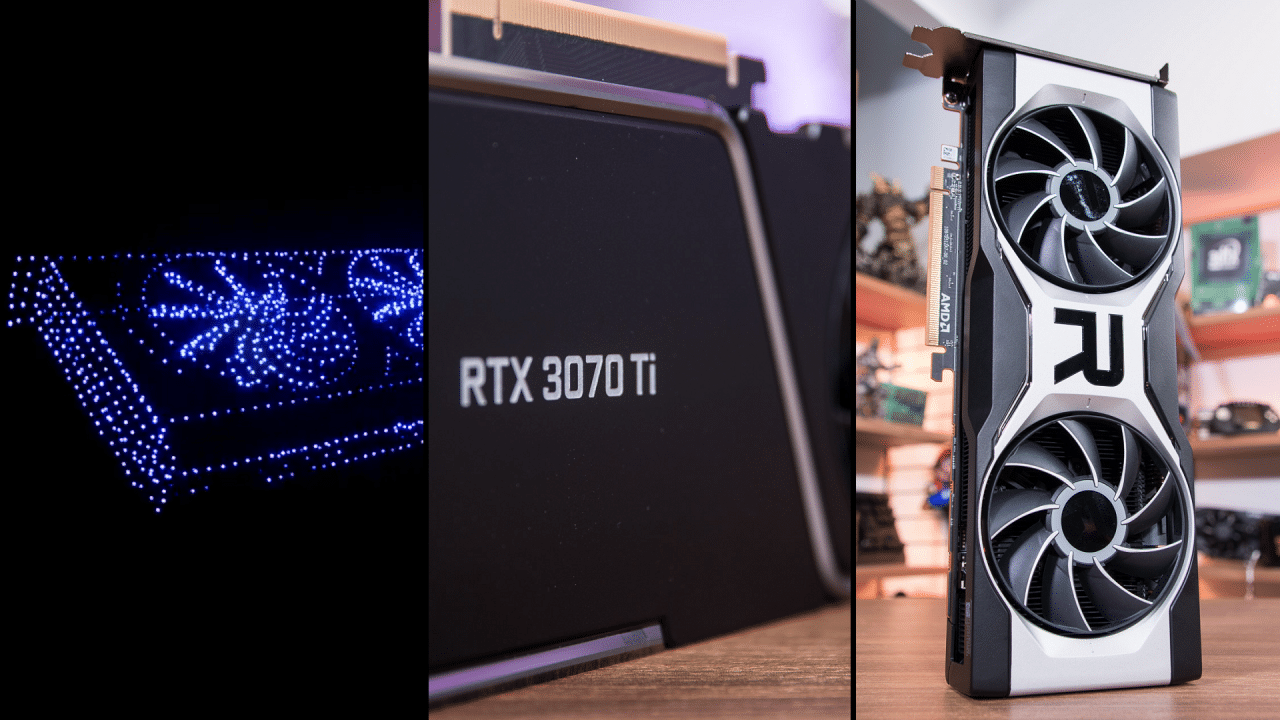In August, Intel unveiled lots of details about its upcoming graphics cards, which will be marketed under the new brand Arc. The processor giant also gave a good overview of the architecture used, Xe-HPG, something that was of course put under the microscope by the internet’s many enthusiasts. Among those who developed the calculator is the German 3DCenter, which provides a first insight into performance.
Specifications: Intel Arc, Geforce RTX 3070 Ti and Radeon RX 6700 XT
Intel Arc | RTX 3070 Ti | RX 6700 XT | |
|---|---|---|---|
Architecture | Vehicle-HPG | Ampere | RDNA 2 |
Technical | 6 nm TSMC | 8 nm Samsung | 7 nm TSMC |
Circuit | DG2 “Alchemist” | GA104 | Navi 22 |
Transistors | ? | 17.4 billion | 17.2 billion |
Circuit surface | ? | 392 mm² | 335 mm² |
Calculation units | 32 st. | 48 st. | 40 st. |
Raster motors | 8 st. | 6 st. | 2 st. |
Texture units | 256 st. | 192 st. | 128 st. |
RT cores | 32 st. | 48 st. | 40 st. |
Tensor cores | 512 st. | 192 st. | – |
Streamprocessorer | 4 096 st. | 6 144 st. | 2 560 st. |
Clock frequency | ~2 000 MHz | 1 770 MHz | 2 581 MHz |
Computational power | ~16 368 GFLOPS | 21 750 GFLOPS | 13 215 GFLOPS |
Tensor performance | ~131 TFLOPS FP16 | 87 TFLOPS FP16 | 25 TFLOPS FP16 |
L2 cache memory | ? | 4 MB | 3 MB |
“Extra” cache | 16 MB Smart Cache(?) | – | 96 MB Infinity Cache |
Memory bus | 256-bit(?) | 256-bit | 192-bit |
Memory amount | 16 GB(?) GDDR6 | 8 GB GDDR6X | 8 GB GDDR6 |
Memory speed | 16 000 MHz(?) | 19 000 MHz | 16 000 MHz |
Memory bandwidth | 512 GB/s(?) | 608 GB/s | 384 GB/s |
TBP/TDP | ? | 290 W | 230 W |
Recommended price | ? | 599 USD | 479 USD |
When Intel shared more details about its first graphics cards with the associated Xe-HPG architecture, it emerged that they had managed to increase the clock frequency by 50 percent compared to Xe-LP, which is integrated into the company’s processors. This means a clock frequency of around 2,000 MHz, which gives a theoretical computing power of just over 16 TFLOPS. It’s more or less exactly the same level as AMD’s Radeon RX 6800.
Since theoretical computing power only gives a very rough indication of performance, 3DCenter chooses to resort to two fairly close extremes. From Nvidia, the choice lands on the graphics circuit GA104, which is at just under 22 TFLOPS in its full-featured version with Geforce RTX 3070 Ti. AMD uses Navi 22, which is found in the Radeon RX 6700 XT and delivers just over 13 TFLOPS.
The comparison becomes even more interesting when it comes to AI performance, where Intel has 512 dedicated cores called Matrix Engines and Nvidia has 192 Tensor Cores. AMD, on the other hand, uses the standard stream processors to perform this type of calculation. Intel makes no secret of the fact that this is something they have invested in, something that is noticeable when the company’s graphics circuit pulls away from Nvidia by as much as 50 percent.
Hardware acceleration for AI is something that will become increasingly important in the future to get better game performance and at the same time increase the image quality. For this purpose, Nvidia has Deep-Learning Super Sampling (DLSS) and Intel’s equivalent is named Xe Super Sampling (XESS). It is thus an area where Intel already with the first generation of graphics cards has the potential to overtake Nvidia.
In conclusion, it is worth emphasizing that comparisons of computing power between different architectures only give a very rough indication of performance. Things like how the architecture is structured, how it uses the resources in different scenarios come into play and not least the software – drivers and how the support looks in applications, most relevant here games.
Intel has historically been criticized for its drivers and since the company lacked graphics-related products worthy of the name, the support is cool among game developers. Once Intel has launched its graphics cards on the market, the company’s next big challenge is expected to be on the software front.















